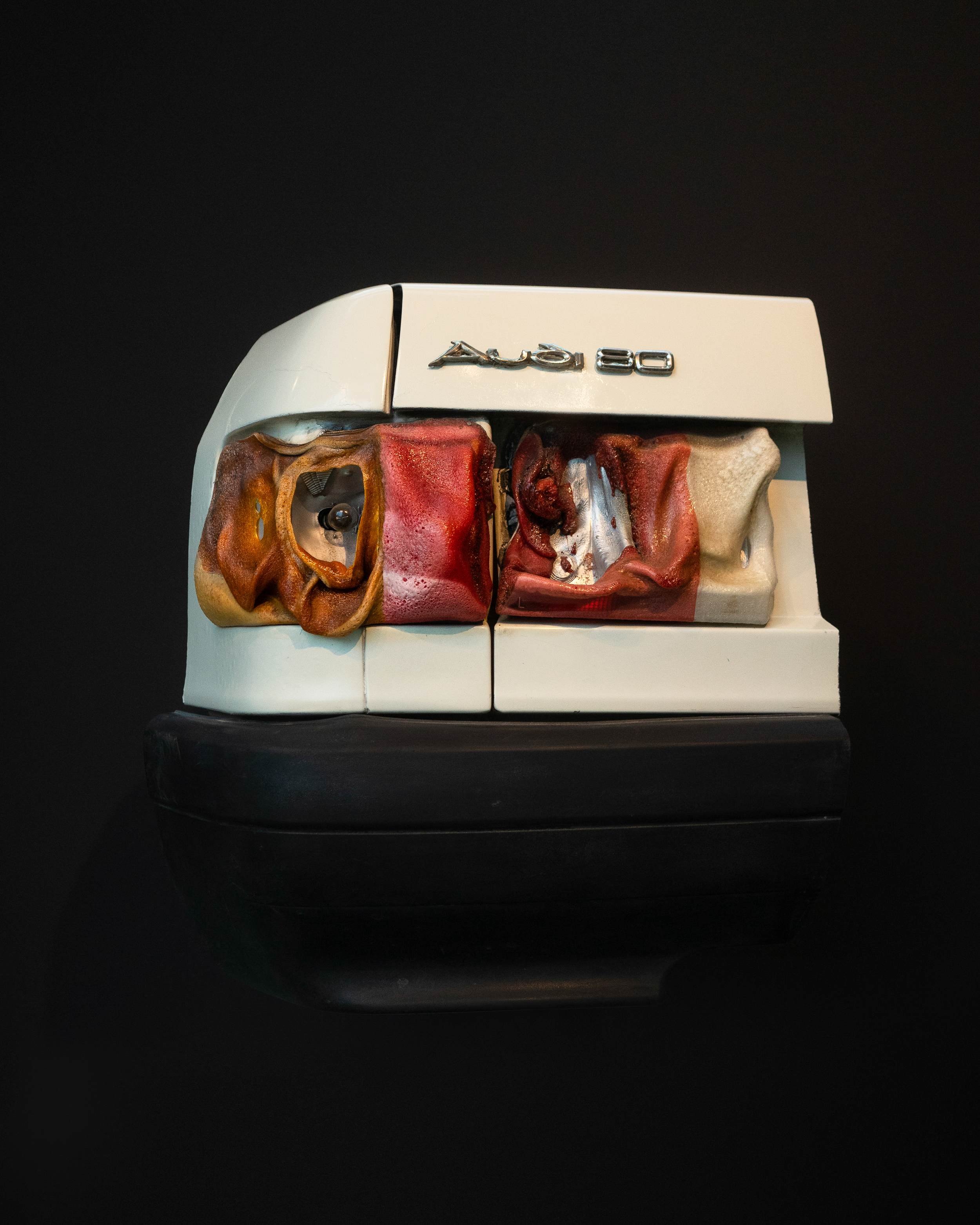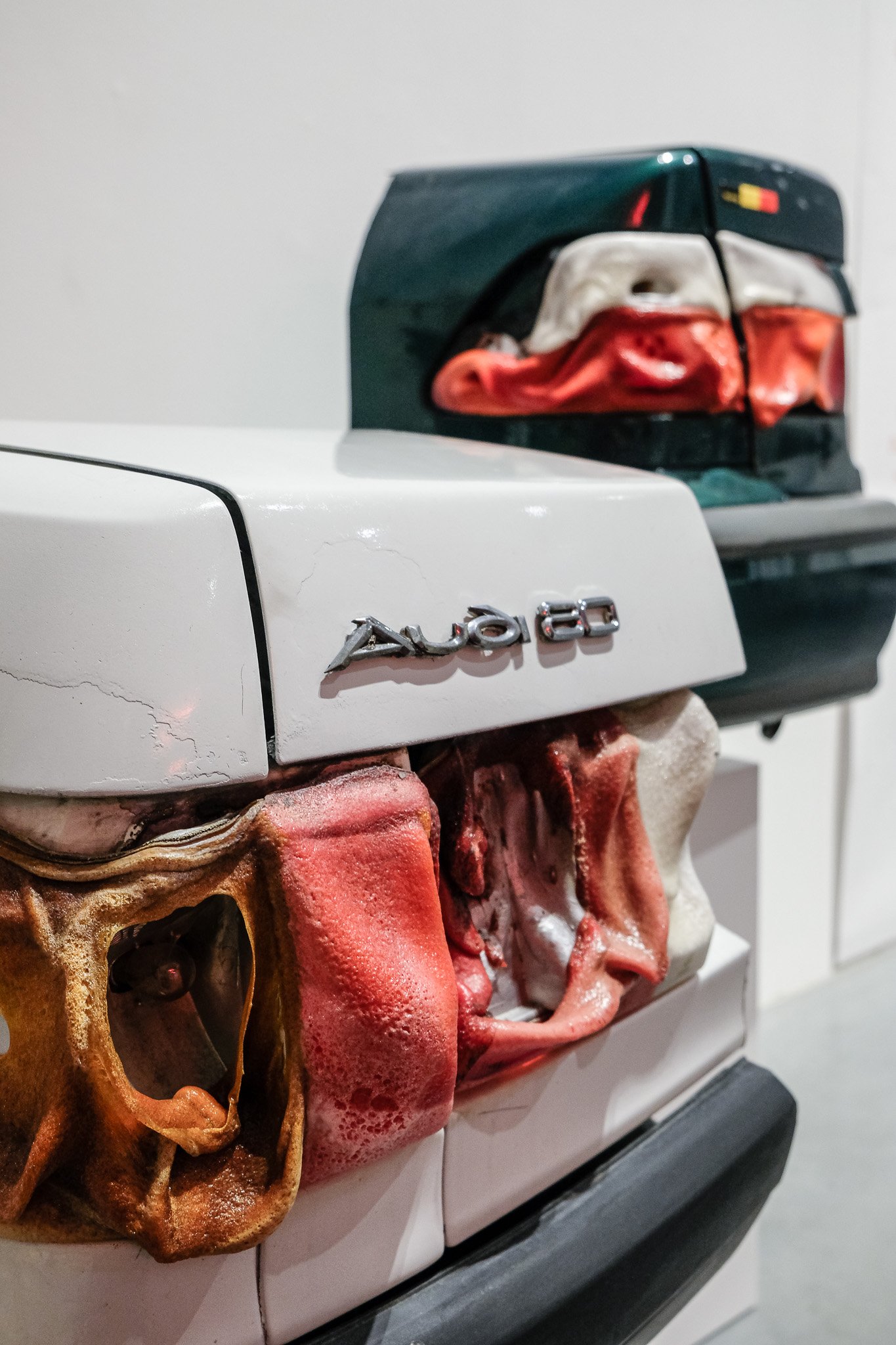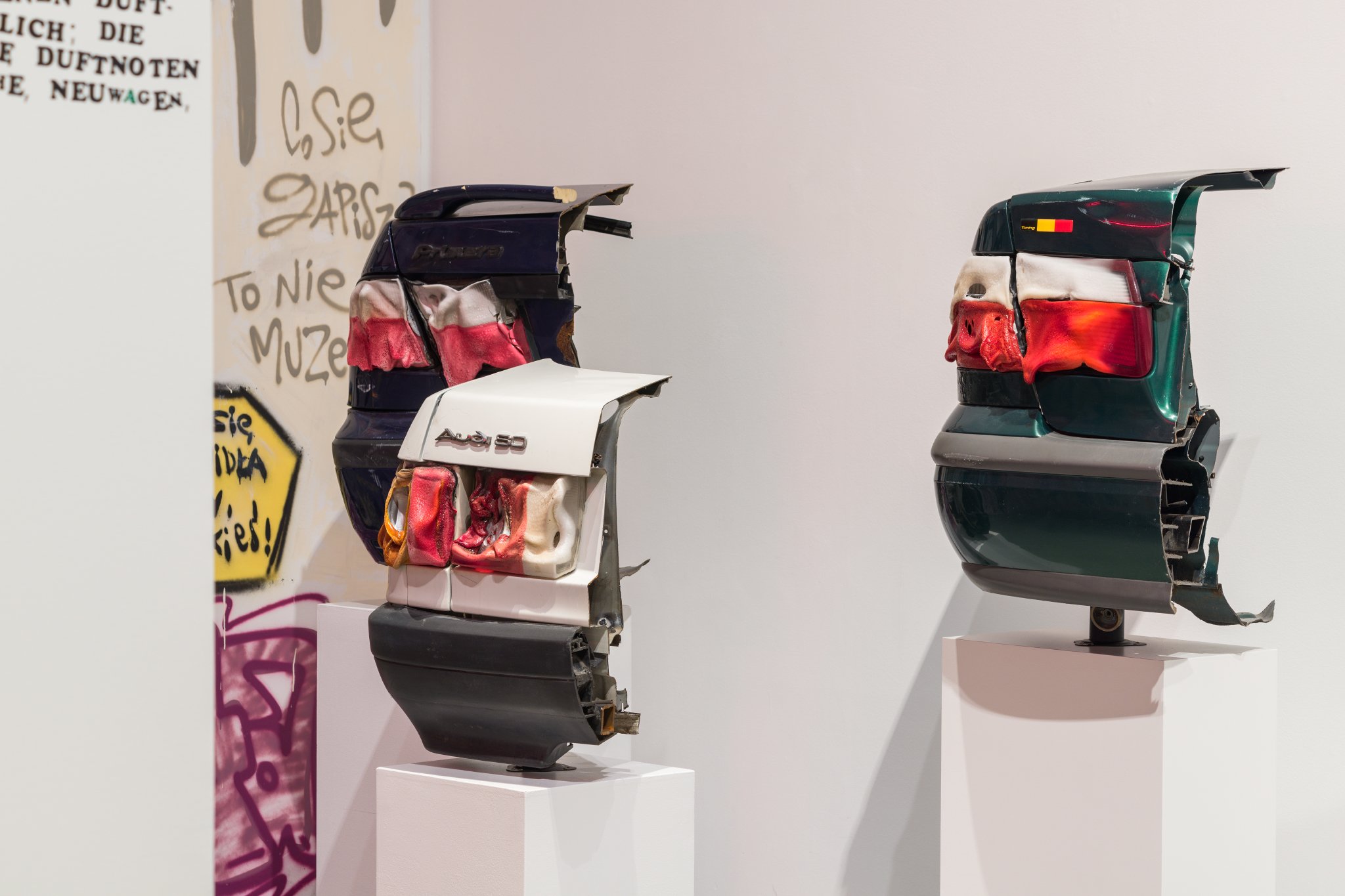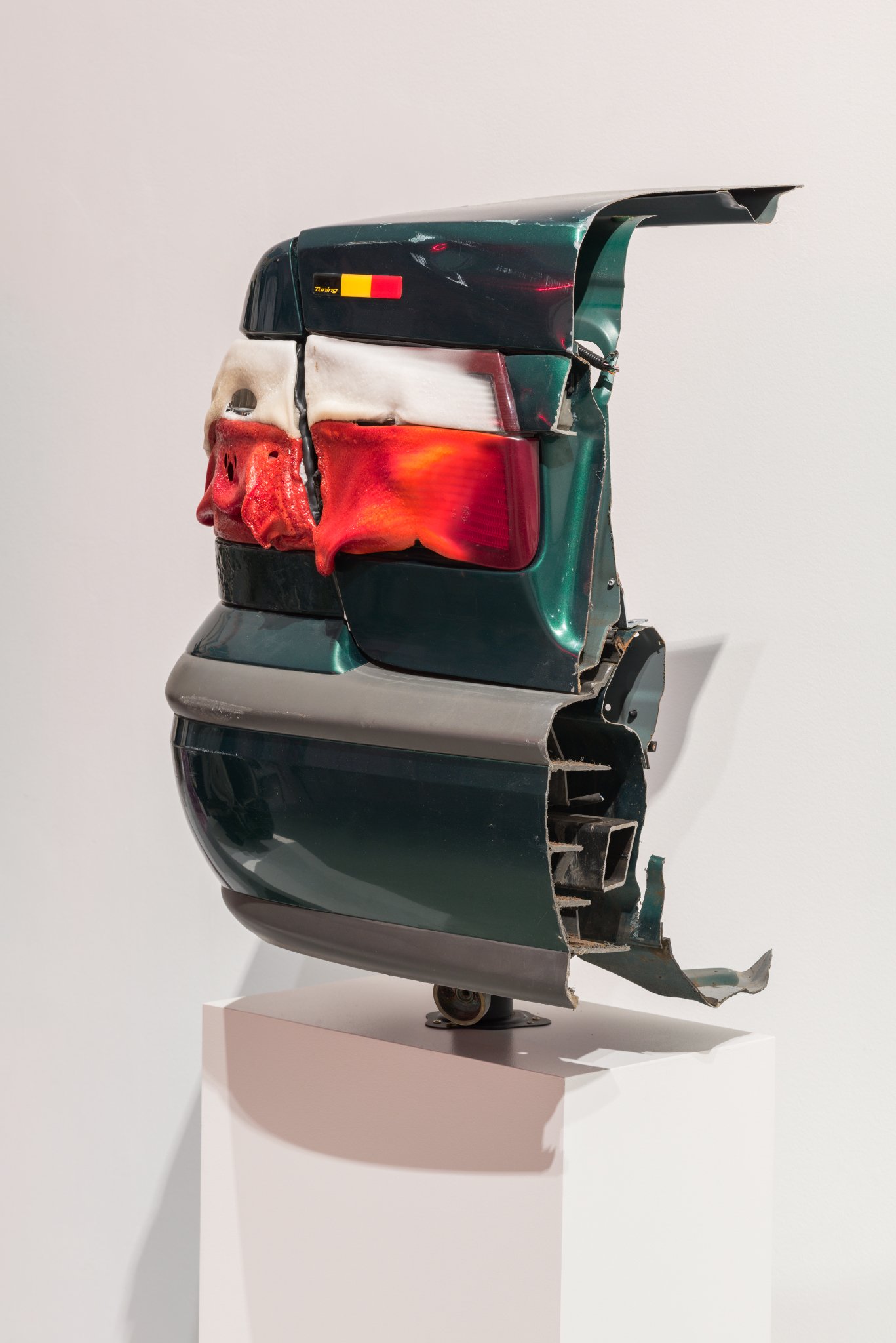Fondue
Installation, 2018;
Exhibition views form Oronsko Sculpture Garden (2020),
Streetfight | Warsaw under construction 14, Museum of Modern Art (2022)
Created as a part of _SOON Project, 2018
Semantically, there’s no difference between melting cheese and melting a car’s lamp. Both are pleasing, both are intriguing, and in terms of both -- eventual consequences are unknown. Yet we tend to view the destruction as the prerequisite to rebirth. This aspect, in particular, can feed our appetite, because when the feelings of being threatened or violated are excluded, controlled destruction can be as satisfying as creation, as it is its natural consequence. It is fear what makes us see destruction as a catastrophe, a no-ways end. A controlled one can highlight the beauty within an object and exchange the nostalgic reminiscent of what it was into the excitement of what it becomes.
On the other hand, Fondue raises the question of the object’s value. A car loses its value when it ceases to be useful on the principles one gave him. It becomes a wreck. But why? Between many different processes of creation, destruction is the one that can be truly causative. Acceptation of different stages of life and treating them equally, blurs the line between good or bad, useful or not, dead or alive. It brings the beauty of the raw flesh to the front; it sees an intriguing and sensual movement in a melting cheese; it views the charm of a melted plastic lamp as in the natural wonders. The starting point is no longer available, but it truly doesn't matter. A melted car may lose its original character irretrievably, but the new is no longer a car, as the fondue is no longer cheese. The "fondue" becomes a metaphor of destruction — a process of constant re- and creation.
text by Patrycja Krekora




